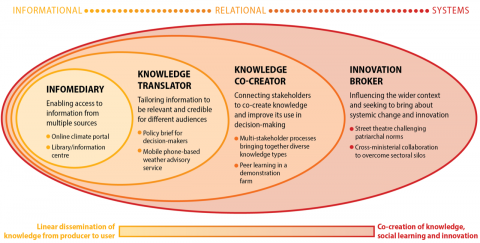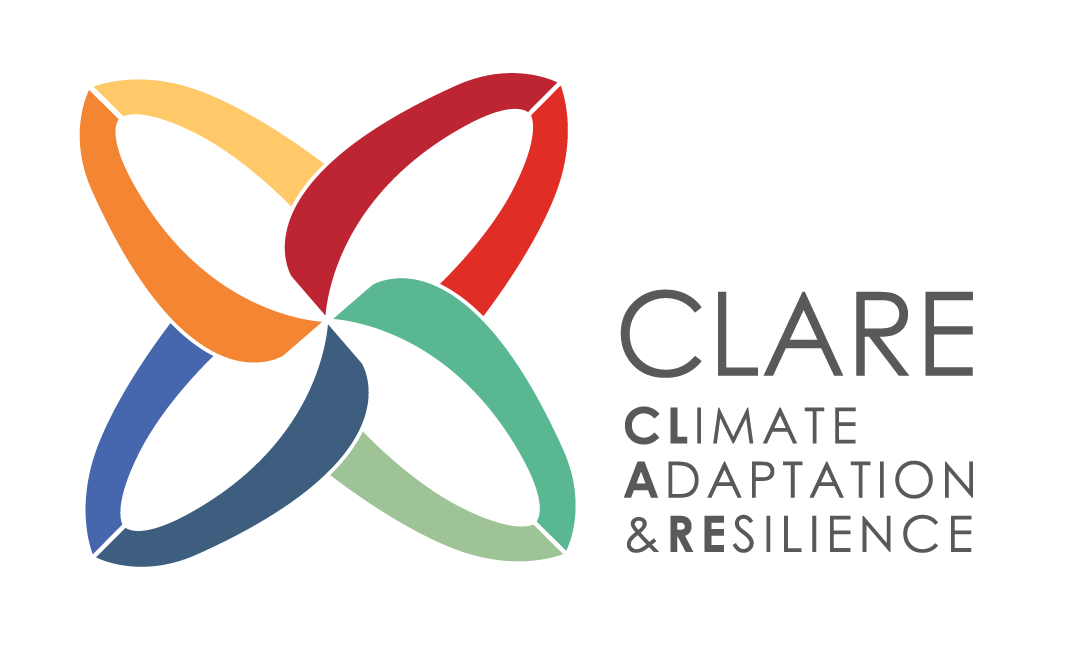
Engaging Communities through Puppetry: reflections from CLARE’s Knowledge Brokering Workshop
/
By Xoliswa Ndeleni
Breaking the barriers to engagement through creative and playful methods can be a powerful tool in knowledge brokering. Puppets have the potential to connect with new audiences and explore complex problems like climate change adaptation and resilience in relatable ways, as illustrated by the Puppet Institute’s work here. This approach is part of a broader process called knowledge translation—a key aspect of knowledge brokering that spans a spectrum of activities, as shown in diagram 1. Knowledge translation involves taking complex information, often from research or policy, and making it accessible, relevant, and actionable for specific audiences. This can involve tailoring language, format, and presentation so that it resonates with people’s lived experiences and inspires engagement or action. By helping bridge the gap between abstract information and real-world application, knowledge translation plays a crucial role in effective knowledge brokering.

Puppetry is a powerful medium for Knowledge Translation
In May 2024, CLARE held a knowledge brokering workshop in Nairobi hosted by the CLARE Research for Impact Hub in collaboration with the Climate and Development Knowledge Network and the CLARE Capacity Strengthening Hub. The objective of the workshop was to strengthen skills and awareness about different knowledge and innovation brokering tools, approaches and strategies that participants could apply in their current and future work. In aid of this, the Kenya Institute of Puppet Theatre(KIP) showcased a unique example of knowledge translation in action. Through puppetry, KIP transforms complex topics like climate change into accessible and engaging stories that are meaningful for local audiences. Their performances demonstrate how creative methods can bring environmental and governance issues to life, making them easier to understand and act upon. KIP’s innovative use of puppetry, both on stage and online, illustrates how knowledge can be made accessible and engaging for communities.
During the workshop, KIP presented a skit that humorously tackled themes of just climate action, highlighting voices from across generations. In the skit, a young girl engaged with both her grandmother and a Ministry of Corporate Affairs representative, bringing different perspectives together. As they discussed climate change, the grandmother recalled a time when the seasons were predictable and limited to four, expressing her confusion about recent shifts. The young girl explained that these changes were due to climate change, bridging scientific insights with lived experience. This interaction not only brought humour but also underscored the importance of intergenerational dialogue in fostering climate awareness.
KIP’s performance exemplifies how creative knowledge translation can foster resilient, well-informed communities by transforming complex climate information into meaningful stories. By incorporating such creative methods, we make strides toward inclusive, impactful climate communication that resonates deeply with diverse audiences.

Creative Methods Matter in Climate Change Communication
Translating climate change knowledge using creative methods is essential because it helps close the gap between scientific information and community understanding. Climate change can often feel distant and abstract, full of technical terms and statistics that do not seem relevant to daily life. However, when presented through creative formats (such as storytelling, art, or performance) it becomes relatable and personal. Creative approaches engage audiences on an emotional level, helping people see themselves and their communities within the message. This connection fosters empathy and makes the realities of climate change feel immediate, encouraging people to consider actions they can take to protect their environment.
Creative knowledge translation is also crucial for reaching diverse audiences across different educational levels, languages, and cultural backgrounds. Many communities have deep-rooted traditions of knowledge sharing through oral storytelling, songs, etc. Using these familiar methods allows climate information to be shared in ways that resonate culturally, ensuring it is both understood and respected. When climate change is presented within these cultural lenses, people are more likely to view it as credible and meaningful, laying a foundation for strong, localised climate action and resilience-building.
To see similar skits and performances, you can check KIP’s YouTube channel for further exploration of their impactful work.
Published
CLARE Projects
CLARE Partners

